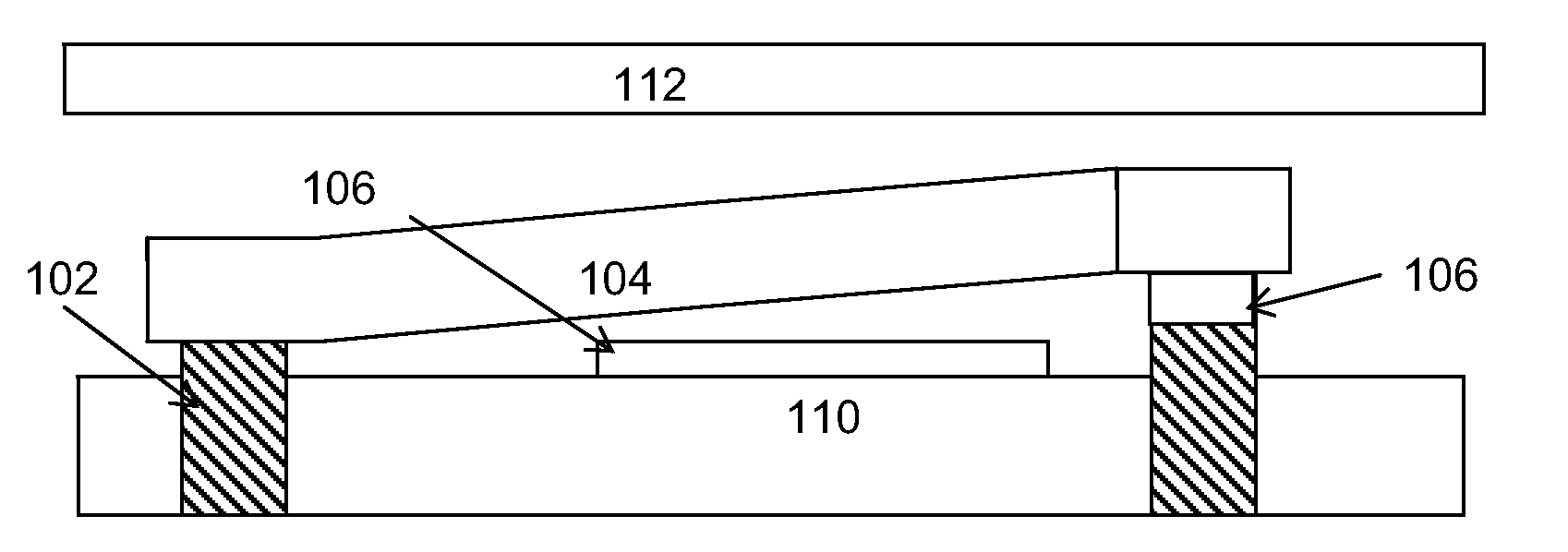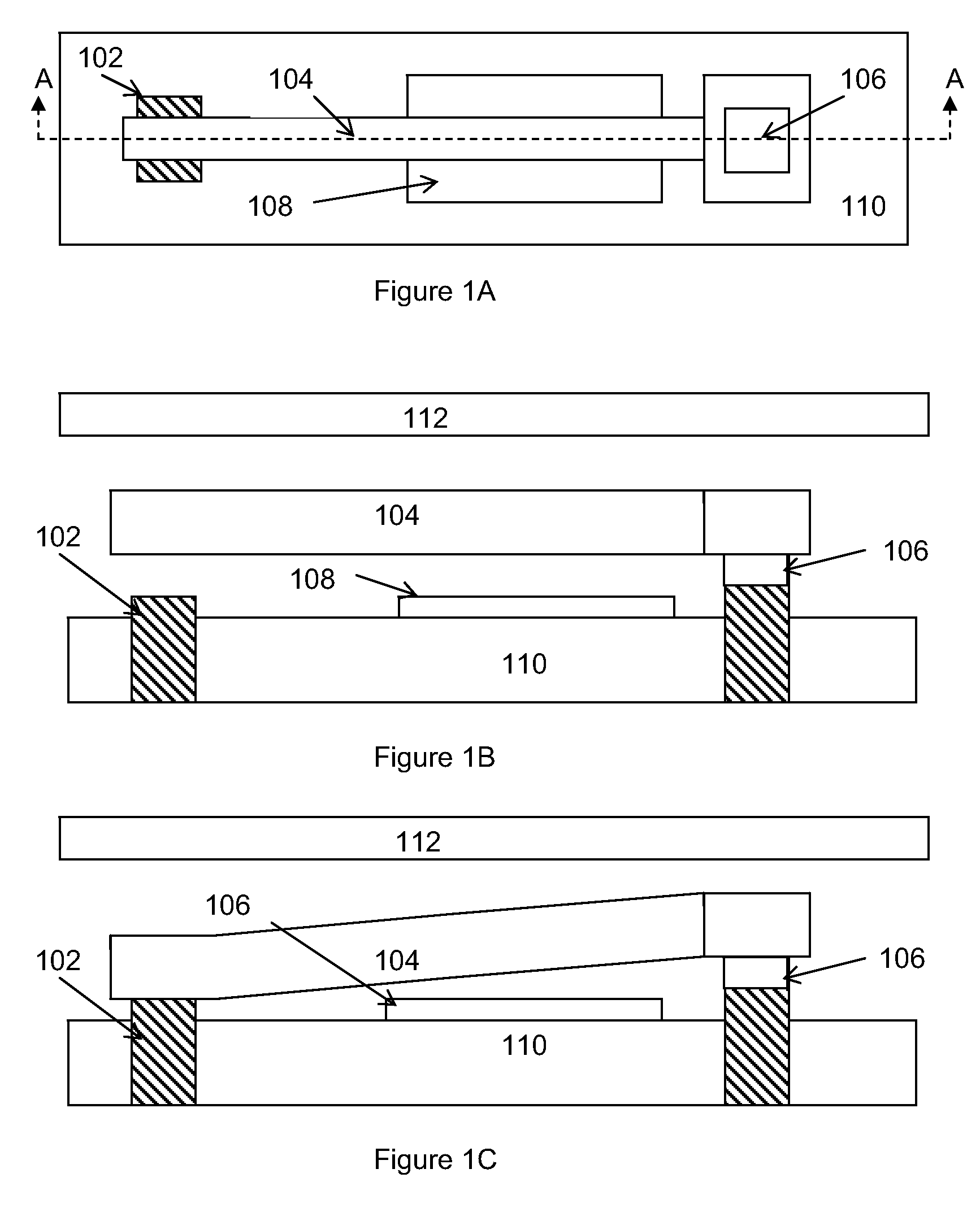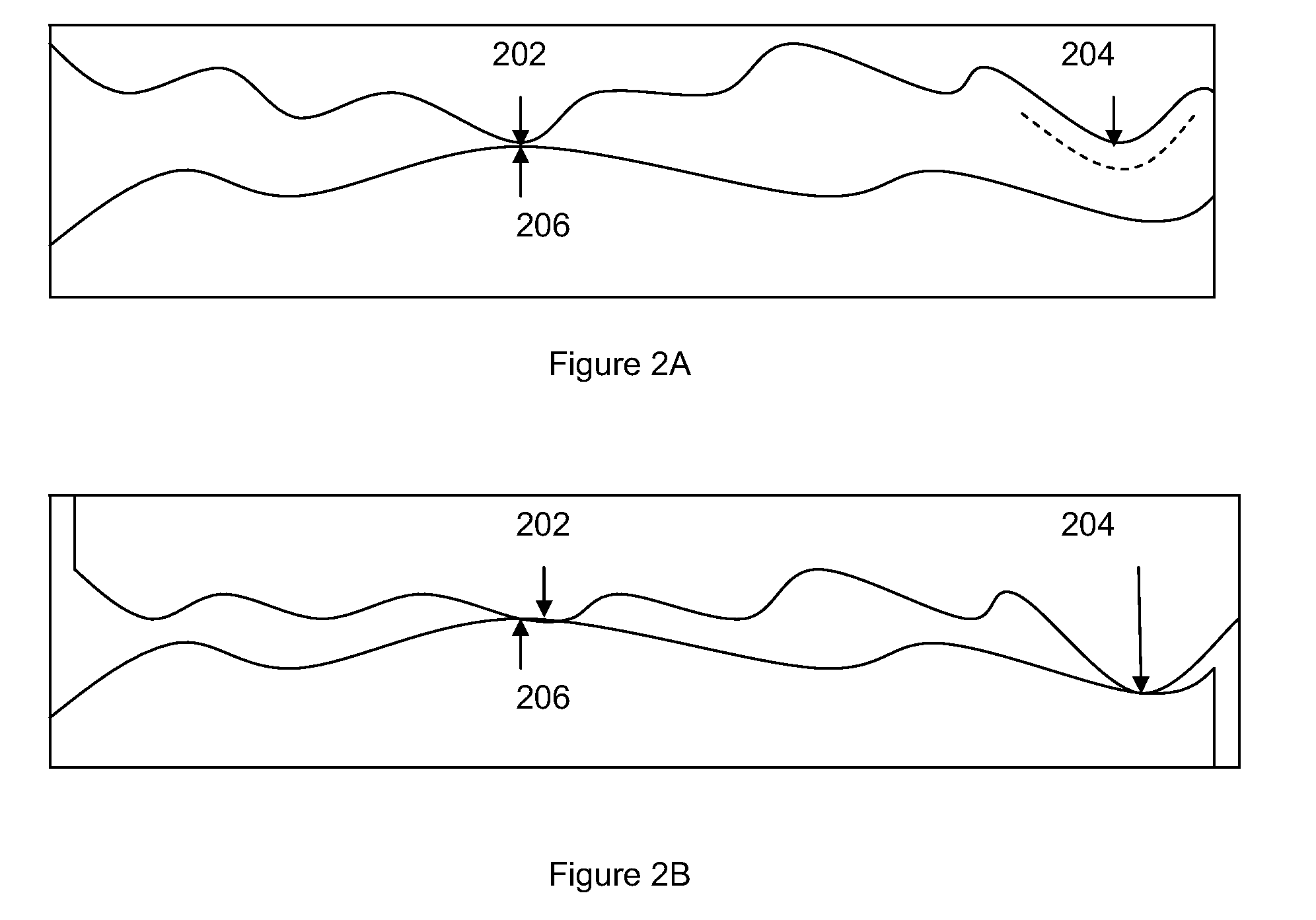Moving a free-standing structure between high and low adhesion states
a free-standing structure and adhesion state technology, applied in the field of free-standing structures, can solve the problems of devices undetected contact with the substrate, large adhesion forces in comparison,
- Summary
- Abstract
- Description
- Claims
- Application Information
AI Technical Summary
Benefits of technology
Problems solved by technology
Method used
Image
Examples
Embodiment Construction
[0031]Embodiments disclosed herein generally solve a stiction problem in switching devices by using pulses of electrical voltage which take the switch from being strongly adhered to a landing electrode to the point where it is only weakly adhered. Once in the low adhesion state, the switch can then be pulled away from contact with a lower force provided by either the spring constant of the switch and / or the electrostatic forces resulting from low voltages applied to nearby electrodes. There is no need to pivot the switch off of the landing electrode with an additional, contacting and / or fulcrum electrode positioned between the landing electrode and the electrode connecting the switch to electrical contacts below the switch.
[0032]The embodiments will be illustrated by considering an electrostatically actuated cantilever device, which can act as a relay, which is either in contact with the landing electrode or spaced therefrom. When the device is in contact with the landing electrode,...
PUM
 Login to View More
Login to View More Abstract
Description
Claims
Application Information
 Login to View More
Login to View More - R&D
- Intellectual Property
- Life Sciences
- Materials
- Tech Scout
- Unparalleled Data Quality
- Higher Quality Content
- 60% Fewer Hallucinations
Browse by: Latest US Patents, China's latest patents, Technical Efficacy Thesaurus, Application Domain, Technology Topic, Popular Technical Reports.
© 2025 PatSnap. All rights reserved.Legal|Privacy policy|Modern Slavery Act Transparency Statement|Sitemap|About US| Contact US: help@patsnap.com



